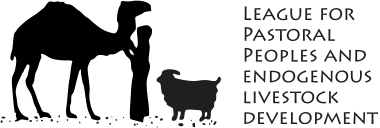Marketing and value-addition of local livestock products
As local livestock breeds cannot compete in quantity with industrial livestock systems, it makes sense to focus on their unique qualitative aspects – as a means of conservation and source of livelihoods. LPP organised the first write-shop on this topic and the result was subsequently published by FAO in its Animal production and Health series. We also support our partner Lokhit Pashu-Palak Sansthan in efforts to diversify the product range of the dromedary camel in India.
Current project: “Ark project”
Publication
- Adding value to livestock diversity. Marketing to promote local breeds and improve livelihoods. FAO Animal production and Health Paper 168. LPP, IUCN&FAO.
Breed Saviours to be awarded in Chennai, India on 10th January
Some twenty livestock keepers will be honoured for stewarding the country’s indigenous livestock breeds. They will receive a certificate and a cash award during a ceremony to be held at India’ s National Biodiversity Authority in Chennai on 10th January. Prior to that, on 9th January, the LIFE Network India will hold a meeting to chart its future course of action. For more information, please contact Mr. Vivekanandan, SEVA, 45, T.P.M.Nagar, Virattipathu,Madurai – 625 010.Tamil Nadu, India. Phone: 0452 – 238 09 43 ; 238 00 82. E-mail vivekseva@gmail.com
A Global Agenda for a Sustainable Livestock Sector
LPP’s Ilse Köhler-Rollefson participated in a high-level meeting held in Thailand from 1-4th December, 2011 that sought to formulate a Global Agenda of Action for a Sustainable Livestock Sector. Hosted by the FAO and the Thai government, some 45 participants agreed on focusing on three particular themes that exemplify some of the problems bogging down the sustainability of livestock production worldwide.
- Go to the previous page
- 1
- …
- 38
- 39
- 40
- 41
- 42
- 43
- 44
- …
- 86
- Go to the next page
